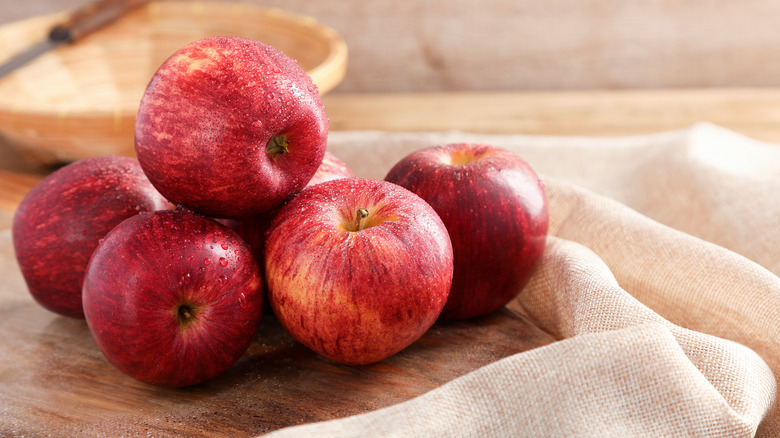The Absolute Best Way To Refrigerate Apples
Have you ever gone to the apple orchard and got a little too eager with your picking? You lug home bushels of the freshest and juiciest Gala, Honeycrisp, and Cortland apples you have every seen. But, after you eat your fair share of them fresh and then turn dozens of other apples into pies, crisps, and applesauce, you still have more apples than you can use quickly so you decide to make room in your refrigerator for storage. But what do you need to know to keep them just as flavorful and crisp as the day you reached up and plucked them from their tree?
First, no matter how you store your apples, you want to make sure any "bad apples" are removed from the group because one bad apple will cause the others to rot, according to Martha Stewart. Also, keep the apples away from other fruits and vegetables because they will make the other produce to ripen faster.
The good news is that when apples are stored properly, they can last for months, per Martha Stewart, which means keeping them in a cold place like the refrigerator.
Temperature and humidity matter
While the refrigerator will keep apples crispy, they shouldn't be placed just anywhere. For the best results, according to Food & Wine, put the apples in the crisper drawer. In the drawer, they can last six to eight weeks, according to Martha Stewart. If you have a second refrigerator, you should place them in there for storage because if you open the door less often, the temperature stays more stable, and you can also lower the temperature, advised Food & Wine. They can be kept refrigerated as low as 30 degrees Fahrenheit, but any lower and they will freeze.
Taste of Home says it's best to set the refrigerator at 30 to 35 degrees Fahrenheit and to add a source of moisture to the space, such as putting the fruit in a plastic bag with holes. A damp paper towel can also be placed over them for added humidity. Certain apples are also better for keeping in storage for a long time, according to MasterClass, which recommends finding crisp and tart apples, such Granny Smith, Fuji, McIntosh, Fuji, Honeycrisp, or Rome. Also look for apples with their stems intact because the stems help to protect the apples from getting microorganisms in them, which will cause the apples to go bad.
Next time you are picking out apples to cook with or eat, feel free to go a little overboard because now you know how to keep the apples for a long period of time.

